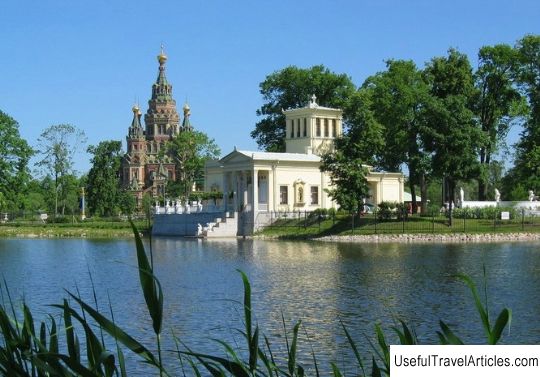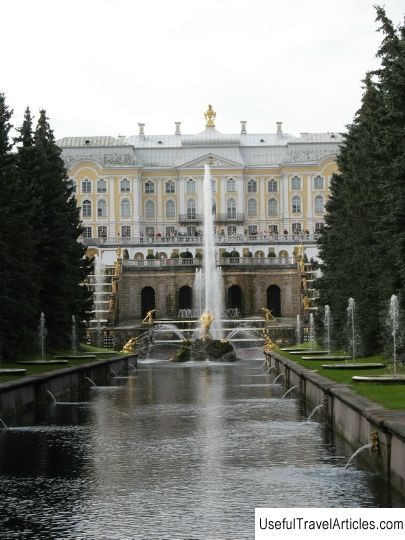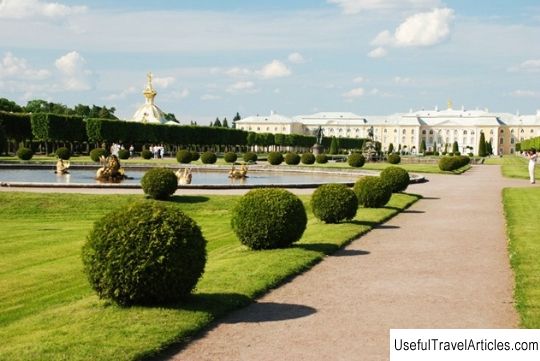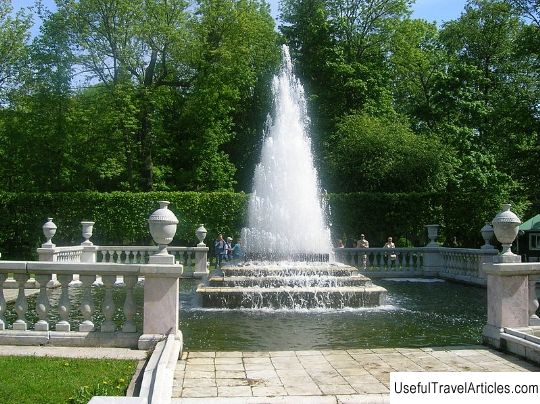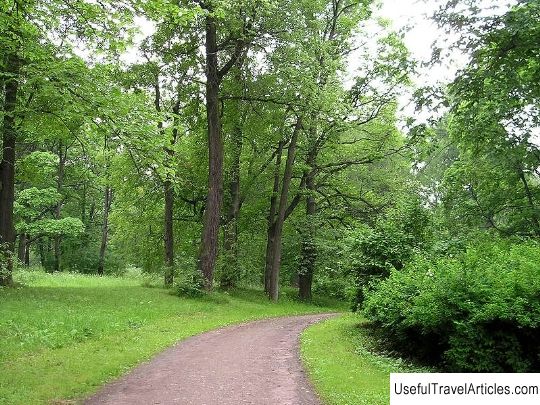English park description and photo - Russia - St. Petersburg: Peterhof
Rating: 7,8/10 (2134 votes) 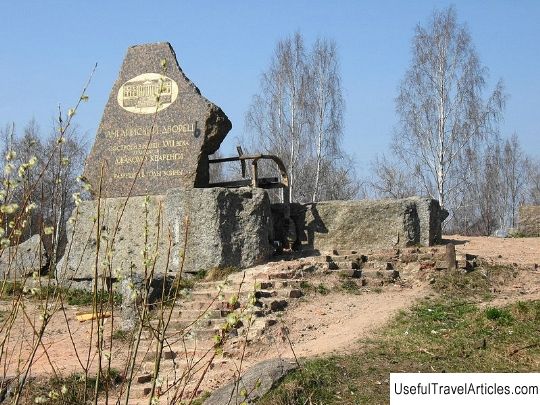
English park description and photos - Russia - St. Petersburg: Peterhof. Detailed information about the attraction. Description, photos and a map showing the nearest significant objects. Photo and descriptionEnglish Park is the first landscape park of Peterhof. In addition, it is the largest park in the city, with an area of 173.4 hectares. It was founded under Catherine II according to the plan of the architect Giacomo Quarenghi and the garden master James Meders. A significant part of the park is occupied by water bodies: English Pond, Peterhof Canal (partly), Troitsky Stream, Peterhof Stream (partly) and others, including unnamed water bodies. The compositional center of the park is a picturesque pond stretching from north to south, with islets and winding shores. It was formed here during the reign of Peter the Great, when in 1720 the Troitsky Stream, which flowed in a deep ditch west of the Lower Park, was blocked by an earthen dam. Then the pond was connected to the Ropsha canal, and spring water began to flow into it. Through the locks from the English Pond, water flows into the Upper Garden canal and into the western part of the Grand Cascade. In 1734, the wooded area adjacent to the pond was converted into a menagerie, which kept wild boars for hunting. In the 1770s, the Boar Menagerie was abolished, and a park in the English, or landscape, style was planned in its place. On the sides of the pond there are two vistas that cut through the park from north to south. They are crossed by a third road running from west to east. The laying of alleys and the planting of trees and shrubs was carried out by gardeners J. Meders, T. Winkelson, D, Gavrilov and T. Timofeev. The architect Quarenghi erected many small buildings in the English Park. There were 11 bridges in the park, variously decorated or in the form of ruins, or framed by intentionally rough-cut stones, balustrades, and so on. After the death of Catherine II, Paul I, who wanted to remake everything that had been done by his mother, ordered to destroy the unfinished pavilions in the park, and send the stone to the erection of Roman fountains, to the pedestal in the Whale Pool in the Lower Park, and so on. During the war, the front edge of the defense of the Oranienbaum patch was laid on the territory of the English Park, and all buildings were destroyed. The English Palace was built in the English Park at the end of the 18th century. Its architect is Giacomo Quarenghi. Only ruins have survived to this day. It was built for Catherine II as a place of solitude. It was a monumental three-story building located on the banks of a pond. The central entrance was accented by a wide granite staircase, leading to the mezzanine, and an 8-mycolon portico of the Corinthian order with a triangular pediment. On the western facade there was a loggia with 6 columns. The basement was finished with granite. The architectural idea and interior decoration were characterized by laconicism. The main role in them was assigned to molding and ornamental painting of floors and walls. Construction work lasted 15 years and ended in 1796, and the completion of the facing of some of the interiors dates back to the beginning of the 19th century - 1802-1805. During the reign of Paul I, the palace was turned into a barracks. Later, during the reign of Alexander I, under the direct supervision of Quarenghi, the palace was seriously renovated. Until 1917, it was the summer residence of foreign guests, diplomats who came to receive receptions in Peterhof. Public concerts and art exhibitions were held here. In July 1885, a concert of Anton Grigorievich Rubinstein took place in the palace. After the revolution, a sanatorium was set up here. During the war, it was completely destroyed by artillery shelling. The birch house, also created by Quarenghi, appeared in the English Park in the summer of 1781. Outside, the log walls of the building were covered with birch bark, the roof was covered with thatch, but behind the plain facade, the lush interiors of the living room, the oval hall and 6 small rooms with mirrors, parquet floors and fine ornamental paintings were hidden. The birch house is the first building in Russia where crooked mirrors were located. In 1941-1945, the house burned down. Restoration work is currently underway in the English Park.         We also recommend reading Vrana Palace description and photos - Bulgaria: Sofia Topic: English park description and photo - Russia - St. Petersburg: Peterhof. |
